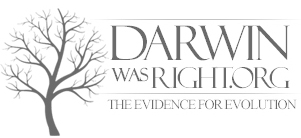Known Examples
Currently, there are four known forms of life that appear to be matching the definition of a ring species. The classic example is that of the Larus gull, which in 1925 was found to form a chain of varieties around the Arctic Circle by Jonathan Dwight, but lately doubts have arisen if this is an actual ring species or not. In 1938, Claud Buchanan Ticehurst hypothesized the Greenish Warbler spread from Nepal around the Tibetan Plateau, while adapting to each new environment, meeting again in Siberia where the ends could no longer interbreed. These and other discoveries led Ernst Mayr to first formulate a theory on ring species in his 1942 study Systematics and the Origin of Species. Also in the 1940s, Robert C. Stebbins recognised the Ensatina around the Californian Central Valley as a ring species. Finally in 2012-2014, the first example of a ring species in plants was found in a Spurge form around the Caribbean Sea.
Larus gulls
A classic example of ring species is the Larus gulls’ circumpolar species “ring”. The range of these gulls forms a ring around the North Pole, which is not normally transited by individual gulls.

The European Herring Gull (L. argentatus argenteus), which lives primarily in Great Britain and Ireland, can hybridize with the American Herring Gull (L. smithsonianus), (living in North America), which can also hybridize with the Vega or East Siberian Herring Gull (L. vegae), the western subspecies of which, Birula’s Gull (L. vegae birulai), can hybridize with Heuglin’s gull (L. heuglini), which in turn can hybridize with the Siberian Lesser Black-backed Gull (L. fuscus). All four of these live across the north of Siberia. The last is the eastern representative of the Lesser Black-backed Gulls back in north-western Europe, including Great Britain.
The Lesser Black-backed Gulls and Herring Gulls are sufficiently different that they do not normally hybridize; thus the group of gulls forms a continuum except where the two lineages meet in Europe.
However, a recent genetic study entitled The herring gull complex is not a ring species has shown that this example is far more complicated than presented here (Liebers et al., 2004): this example only speaks to the complex of species from the classical Herring Gull through Lesser Black-backed Gull.[improper synthesis?] There are several other taxonomically unclear examples that belong in the same superspecies complex, such as Yellow-legged Gull (L. michahellis), Glaucous Gull (L. hyperboreus), and Caspian Gull (L. cachinnans).
Greenish Warbler
The Greenish Warbler (Phylloscopus trochiloides) forms a species ring, around the Himalayas. It is supposed to have spread from Nepal around the inhospitable Tibetan Plateau, to rejoin in Siberia, where the plumbeitarsus and the viridanus appeared to no longer be able to mutually procreate.

Ensatina
The Ensatina salamanders form a ring round the Central Valley in California.
Euphorbia tithymaloides
In 2012-2014, Cacho and Baum described the first example of a ring species in plants. They showed the Euphorbia tithymaloides is a group within the Spurge family, that has reproduced and evolved in a ring through Central America and the Caribbean, meeting in the Virgin Islands where they appear to be morphologically and ecologically distinct.
Dawkins, R. The Ancestor’s Tale, 2004:303
Brown, Rob. “”Same Species” vs. “Interfertile”: concise wording can avoid confusion when discussing evolution””
The greenish warbler ring species, by Darren Irwin
A closer look at a classic ring species: The work of Tom Devitt
Liebers, Dorit; de Knijff, Peter; Helbig, Andreas J. (2004). “The herring gull complex is not a ring species” (PDF). Proc. Roy. Soc. B 271 (1542): 893–901. doi:10.1098/rspb.2004.2679. Electronic Appendix
Alström, Per (2006). “Species concepts and their application: insights from the genera Seicercus and Phylloscopus” (PDF). Acta Zoologica Sinica 52 (Suppl): 429–434.
This species ring forms the subject of “The Salamander’s tale” in Richard Dawkins’ The Ancestor’s Tale, 2004.
Cacho & Baum (2012-2014) “The Caribbean slipper spurge Euphorbia tithymaloides: the first example of a ring species in plants”, Procedings of the Royal Society B
